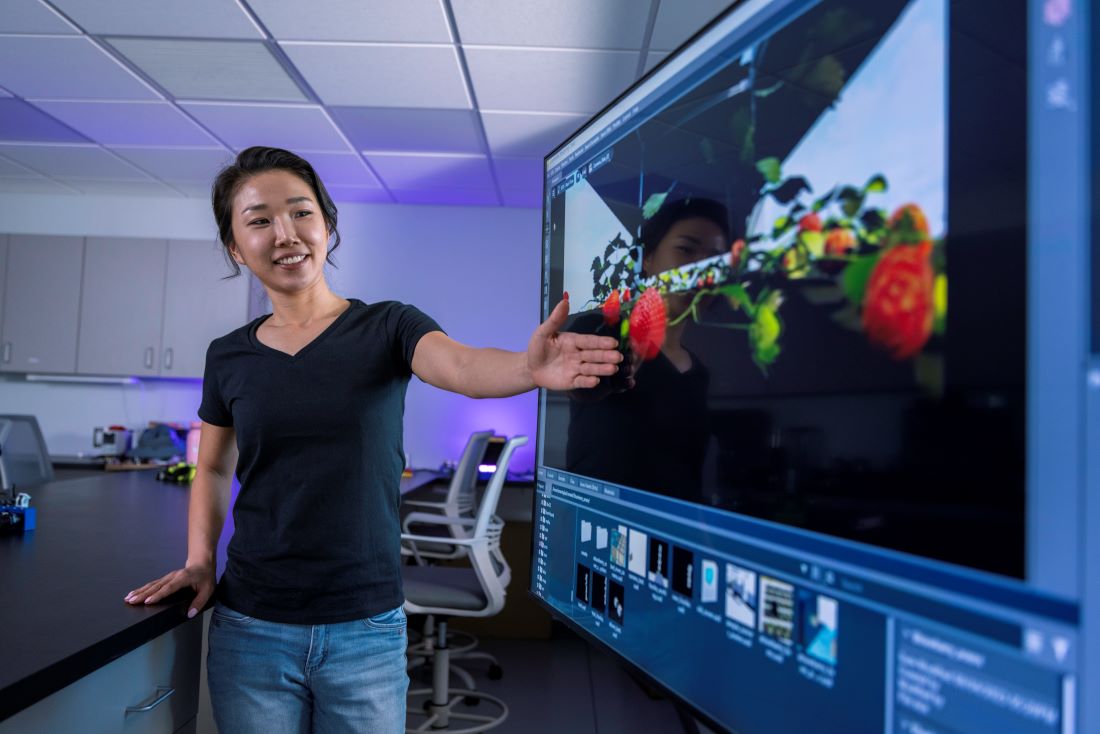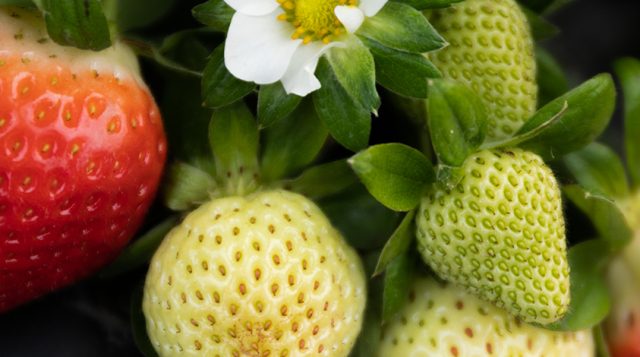## From Farm to Pixel: How AI is Harvesting Strawberries Before They Even Grow 🍓👾
Imagine a strawberry farm you can control with the click of a mouse. No, it’s not a video game, it’s the future of agriculture! The University of Florida is using cutting-edge “Digital Twin” technology to simulate entire strawberry fields, supercharging AI tools and slashing costs.

Real-World Impact: AI Estimations of Fruit Diameter are Accurate Enough for Commercial Grading

The University of Florida’s research team has demonstrated the real-world impact of digital twin technology in the agricultural sector. Their development of a virtual replica of a strawberry field, complete with life-size rows, leaves, and berries, has yielded significant results. Using this digital twin, the team trained an artificial intelligence (AI) system to identify and classify strawberries. The findings are particularly noteworthy because the AI achieved 92% accuracy in detecting fruit, without relying on any real-world training data. This breakthrough signifies the potential of virtual environments to accelerate the development and refinement of AI-powered tools for agriculture.
Beyond fruit detection, the AI system was also able to estimate the diameter of real-world strawberries with an impressive 1.2 millimeter error. This level of accuracy is significant because precise fruit size and volume are crucial for commercial grading and yield prediction. The ability to accurately assess fruit characteristics virtually opens up new possibilities for optimizing harvesting schedules and maximizing profitability.

The Cost-Cutting Revolution: Saving Time and Resources
Streamlining Development
Digital twin technology offers a cost-effective and time-saving approach to developing and testing agricultural robotics. Instead of relying on expensive and time-consuming real-world trials, developers can use the virtual environment to simulate various scenarios and refine their designs. This iterative process allows for faster identification and resolution of technical issues, ultimately leading to more efficient and reliable robotics solutions.

Faster Innovation
The ability to create and label synthetic images within the digital twin eliminates the need for extensive field work. This significantly reduces the time and resources required for data collection and labeling, which are traditionally time-consuming and labor-intensive processes. This accelerated data generation cycle empowers researchers and developers to iterate rapidly and bring innovative agricultural technologies to market faster.

Lowering Prices
By streamlining development and reducing the need for extensive real-world testing, digital twin technology contributes to lower development costs. These cost savings can be passed on to farmers, making advanced agricultural technologies more accessible and affordable. This increased affordability can empower smaller farms to adopt innovative solutions, fostering a more equitable and sustainable agricultural landscape.
Beyond the Berry: The Future of Digital Twins in Agriculture
Expanding Applications
The success of the strawberry field digital twin demonstrates the broad applicability of this technology across diverse agricultural sectors. The potential extends to other crops, livestock, and even entire farm ecosystems. By creating virtual replicas of these complex systems, researchers can gain deeper insights into their behavior, optimize resource allocation, and develop innovative solutions for a wide range of agricultural challenges.
Operator Training
Digital twins offer an invaluable platform for training operators on autonomous machinery. In a safe and controlled virtual environment, operators can learn to interact with the technology, understand its capabilities, and develop the skills necessary to effectively manage and maintain autonomous systems. This training approach enhances operator confidence, reduces the risk of accidents, and accelerates the adoption of automated technologies in agriculture.
A Sustainable Future
The environmental benefits of digital twin technology in agriculture are significant. By optimizing resource use, minimizing waste, and reducing reliance on chemical inputs, digital twins can contribute to more sustainable agricultural practices. This aligns with the growing global demand for environmentally responsible food production methods and paves the way for a more resilient and sustainable future for agriculture.
Conclusion
So, there you have it: a digital twin of a strawberry farm, powered by the magic of AI, isn’t just a cool concept anymore, it’s a reality. The University of Florida’s research demonstrates how this technology can revolutionize agriculture, optimizing yields, minimizing costs, and even predicting potential challenges before they strike. Imagine a future where farmers can fine-tune every aspect of their crops – from irrigation and fertilization to pest control – with unprecedented precision, all thanks to data gleaned from a virtual replica of their farm.
This breakthrough has far-reaching implications, not just for strawberry farmers but for the entire agricultural landscape. As digital twins become increasingly sophisticated, they hold the potential to transform how we grow food, address global food security concerns, and even contribute to environmental sustainability. We’re moving towards a future where farming is no longer a gamble but a science, guided by data and powered by intelligent systems. The question isn’t whether this technology will change the world, but how quickly we can embrace it and reap its bountiful rewards.
Let’s plant the seeds for a smarter, more sustainable future, one digital twin at a time.